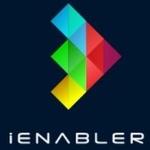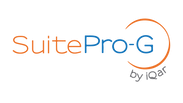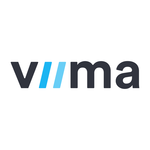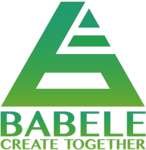Description

iEnabler

Planbox
Comprehensive Overview: iEnabler vs Planbox
iEnabler and Planbox are tools designed to aid organizations in innovation management and project execution. Here's a detailed overview of each:
a) Primary Functions and Target Markets
iEnabler:
Primary Functions:
- Idea Management: iEnabler is designed to capture, evaluate, and prioritize ideas from various sources within an organization.
- Collaboration Tools: Facilitates team collaboration for developing and refining ideas.
- Innovation Pipeline Management: Helps manage the lifecycle of ideas from conception to implementation.
- Analytics and Reporting: Provides insights through analytics and reporting features to track innovation metrics and performance.
Target Markets:
- Medium to large enterprises focused on innovation-led growth.
- Industries such as technology, pharmaceuticals, consumer goods, and manufacturing, where innovation is a critical driver.
- Organizations looking to foster a culture of innovation and leverage employee creativity.
Planbox:
Primary Functions:
- Innovation Management: Similar to iEnabler, Planbox provides tools for idea exploration, ranking, and development.
- Agile Project Management: Integrates agile methodologies into project management, allowing for more flexible and adaptive project execution.
- Portfolio Management: Offers capabilities to prioritize and align innovation projects with strategic business goals.
- Engagement and Gamification: Tools to engage employees and stakeholders in the innovation process using gamification strategies.
Target Markets:
- Companies across all sizes but with a focus on those embracing agile and lean methodologies.
- Broad range of industries including finance, IT, healthcare, and education.
- Organizations focused on integrating agile project management with innovation processes.
b) Market Share and User Base
While specific and up-to-date market share figures for iEnabler and Planbox might not be publicly available, some general observations can be made:
-
Planbox: Recognized as an established player in the innovation management space and has a relatively strong market presence. Known for its comprehensive suite that integrates innovation with agile project management, it attracts a diverse range of clients globally. The user base includes enterprises of various industries indicated by their broad applicability and robust integration capabilities.
-
iEnabler: May not have as widespread recognition or market share as Planbox but serves a critical niche in idea management. Suitable for companies with a primary focus on harnessing and managing ideas efficiently. Their market presence might be more concentrated on specific industries or regions.
c) Key Differentiating Factors
-
Integration with Agile Methodologies: Planbox stands out for integrating agile methods into its project management framework, making it appealing to organizations looking to incorporate agile practices into their innovation processes.
-
Comprehensive Suite: Planbox offers a more comprehensive suite with tools that cover the entire breadth of innovation and project management, from idea inception to execution, which may appeal to larger enterprises looking for an all-in-one solution.
-
Focus on Idea Management: iEnabler focuses more intensely on capturing and managing ideas, with processes in place for evaluating and prioritizing innovations. It might be better suited for organizations particularly emphasizing idea generation and refinement.
-
Engagement and Gamification: Planbox offers engagement tools, including gamification, to foster a culture of innovation and enhance user participation, which can be a determinant factor for organizations looking to boost employee involvement.
-
Market Focus: iEnabler may have a more targeted application for specific sectors where idea management is prioritized, whereas Planbox offers solutions across a wider range of industries due to its adaptable and integrative features.
These differences will dictate which tool is more applicable depending on an organization’s requirements, goals, and existing systems. Each platform offers unique advantages suited to varied aspects of innovation and project management.
Contact Info

Year founded :
Not Available
Not Available
Not Available
Not Available
Not Available

Year founded :
1999
+1 514-788-4703
Not Available
Canada
http://www.linkedin.com/company/planbox
Feature Similarity Breakdown: iEnabler, Planbox
iEnabler and Planbox are both platforms designed to support innovation management, project management, and workflow optimization within organizations. Here is a breakdown of their feature similarities and distinctions:
a) Core Features in Common
Both iEnabler and Planbox share several core features aimed at facilitating collaboration, innovation, and project management:
-
Idea Management: Both platforms offer capabilities for users to submit, collaborate, and develop ideas. They include tools for capturing, evaluating, and prioritizing ideas to ensure that the best concepts are pursued.
-
Workflow Management: They allow for the creation and management of workflows to support project execution from ideation to implementation.
-
Collaboration Tools: Both offer features that facilitate teamwork, such as discussion forums, chat, and shared documents, enabling users to work together effectively.
-
Reporting and Analytics: Each provides analytical tools and reporting capabilities to help organizations track progress, measure the impact of projects, and make data-driven decisions.
-
Customizable Dashboards: Both platforms have customizable dashboards allowing users to tailor the user interface to display the most relevant information for their needs.
b) User Interface Comparison
-
iEnabler: iEnabler typically has a clean and intuitive user interface that emphasizes ease of use. It focuses on providing a straightforward experience with an emphasis on navigation simplicity. The design is often described as user-friendly, with a focus on minimizing the learning curve for new users.
-
Planbox: Planbox offers a visually appealing interface that is highly configurable. It tends to focus on visualization of data and activities, allowing users to see the progress and status of various initiatives at a glance. The UI tends to offer more graphical representations of data, which can be appealing to users who prefer visual insights.
c) Unique Features
-
iEnabler:
- Gamification: This platform often incorporates gamification elements to encourage user engagement and idea submission, which can be a critical feature for maintaining an active user base.
- Simple Integration: iEnabler offers straightforward integration with existing enterprise systems, which can be advantageous for organizations looking to enhance their current infrastructure without significant disruption.
-
Planbox:
- AI-Powered Insights: Planbox incorporates AI tools to help with idea evaluation and trend identification, offering predictive insights that can guide strategic decision-making.
- Innovation Ecosystem: It provides an innovation ecosystem that connects internal and external stakeholders, partners, and customers, fostering a broader collaborative environment.
- End-to-End Innovation Management: Planbox often emphasizes end-to-end innovation management capabilities, covering everything from problem identification to solution execution and impact measurement.
In summary, while iEnabler and Planbox share several important core features, they offer distinct experiences primarily through their user interface designs and unique capabilities. iEnabler is more straightforward with ease of integration and user engagement via gamification, whereas Planbox offers advanced analytics and external collaboration tools with a strong focus on AI-driven insights.
Features

Not Available

Not Available
Best Fit Use Cases: iEnabler, Planbox
To address your query effectively, let's break down the information on iEnabler and Planbox, focusing on their best fit use cases, applicable business types, scenarios, and how they cater to different industries and company sizes.
iEnabler
a) For what types of businesses or projects is iEnabler the best choice?
- Innovation-Driven Organizations: iEnabler is tailored for businesses that prioritize innovation and need a structured approach to evolve and manage their innovation processes. This includes companies in fast-paced industries like technology, pharmaceuticals, and consumer goods.
- Companies Focusing on Idea Management: It's ideal for organizations that want to gather, evaluate, and prioritize ideas from multiple sources—whether internal or external stakeholders, including employees, customers, and partners.
- Projects Requiring Collaborative Innovation: Businesses that emphasize collaboration across different departments or with external partners can benefit from iEnabler’s focus on collective idea generation and refinement.
d) How does iEnabler cater to different industry verticals or company sizes?
- Industry Verticals: iEnabler supports various industries such as manufacturing, healthcare, financial services, and education by allowing customization to fit specific innovation needs.
- Company Sizes: It's versatile enough for small startups that need to jumpstart their innovation culture, as well as for large enterprises with established innovation departments that require solutions to streamline and manage their idea flow efficiently.
Planbox
b) In what scenarios would Planbox be the preferred option?
- Agile Project Management: Planbox excels in scenarios where agile methodologies are preferred. It's ideal for technology companies, software development projects, and any environment where iterative development and rapid releases are beneficial.
- Continuous Improvement Initiatives: Organizations aiming for continuous improvement and iterative process enhancements can leverage Planbox’s features geared towards adaptive change and process optimization.
- Resource and Portfolio Management: Companies with complex project portfolios that require careful resource allocation and management will find Planbox’s capabilities in these areas particularly useful.
d) How does Planbox cater to different industry verticals or company sizes?
- Industry Verticals: Planbox is adaptable to sectors like IT, consulting, marketing, and beyond, enabling teams in these areas to manage their workflows and projects effectively.
- Company Sizes: Planbox is scalable, working well for both small teams that need straightforward project management tools and large organizations needing a robust solution for managing extensive project portfolios across various departments.
Conclusion
In summary, iEnabler is best suited for organizations emphasizing innovation and idea management, regardless of their size, especially those that want to harness collaborative inputs for strategic growth. Planbox, on the other hand, is ideal for scenarios where agile project management and continuous improvement are paramount, serving a wide range of industries and accommodating different company sizes with scalable solutions.
Pricing

Pricing Not Available

Pricing Not Available
Metrics History
Metrics History
Comparing teamSize across companies
Conclusion & Final Verdict: iEnabler vs Planbox
To provide a clear conclusion and final verdict for iEnabler and Planbox, it's important to consider key aspects such as features, pricing, ease of use, support, and scalability. Here's a breakdown of the two platforms:
a) Best Overall Value
Planbox Considering all factors, Planbox often offers the best overall value for organizations looking for a comprehensive innovation management solution. It combines robust features, an intuitive user experience, excellent support, and scalability to accommodate growing business needs. For companies focused on idea management, innovation portfolio management, and agile workflows, the holistic suite of tools offered by Planbox provides more value.
b) Pros and Cons
iEnabler
Pros:
- Cost-Effective: Often appeals to smaller businesses or startups due to competitive pricing.
- User-Friendly: Simple and straightforward, making it easy for non-technical users to adopt quickly.
- Quick Implementation: Can be set up faster due to its simplified features.
Cons:
- Limited Features: May not cater to all the needs of larger organizations or those requiring advanced functionalities.
- Scalability Issues: Might not support rapid business growth or complex innovation processes.
Planbox
Pros:
- Comprehensive Features: Offers a wide range of tools for managing the entire innovation lifecycle.
- Customization and Integration: Adaptable to various business needs with strong integration capabilities.
- Strong Customer Support: Consistently praised for responsive and helpful customer service.
Cons:
- Higher Cost: May not be suitable for small businesses with tight budgets.
- Complexity: Might have a steeper learning curve due to its extensive feature set.
c) Recommendations
-
Assess Business Needs: Users should first clearly define their business objectives and the specific outcomes they wish to achieve through an innovation management platform.
-
Budget Considerations: Smaller companies or those with limited budgets might lean towards iEnabler for its affordability. In contrast, organizations with more complex requirements and a flexible budget may find Planbox more suited to their needs.
-
Pilot Testing: It is advisable to take advantage of trial periods or demo sessions offered by both products to better understand their usability and fit for your organization.
-
Scalability and Future Needs: Consider not just current, but future needs. If your organization anticipates rapid growth, investing in a more scalable and robust platform like Planbox could prove more beneficial in the long term.
Ultimately, for those prioritizing a comprehensive feature set and flexibility, Planbox is the recommended choice. However, for organizations where cost is a critical factor, and the needs are straightforward, iEnabler presents a solid alternative.
Add to compare
Add similar companies




